Dear Artist,
When American art dealer Seth Seigelaub wrote The Artist’s Reserved Rights Transfer and Sale Agreement in 1971 — with the help of lawyer Robert Projansky — it was with the goal of compensating creators should their work ever increase in value and be resold. At the time, the contract was widely published in art rags — much the same way Seigelaub was distributing the conceptual art he represented in his eponymous New York gallery — and offered to anyone who might need it.
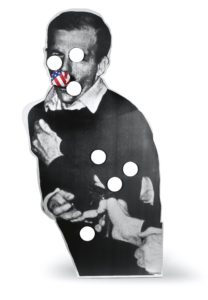
Oozewald, 1989
Silkscreen ink on aluminum plate and two flags
72 x 36 x 7 inches
Number one from an edition of four plus one artist’s proof
by Cady Noland (b. 1956)
This work set a record for the highest price ever paid for a work by a living female artist when it was sold at Sotheby’s in 2011 for $6.58 million.
Siegelaub’s agreement guarantees artists 15% of any increase in the value of each work, whenever it’s transferred in the future, plus a record of its provenance. The agreement also guarantees artists the right to be notified and veto, if desired, when work is to be exhibited or reproduced and gives rental rights and rights to borrow and repair work, when necessary. It lasts the lifetime of the artist and spouse (if there is one) and 21 years thereafter, so that any kids can also benefit. If this all sounds like a bit of a burden on the collector who stuck her neck out for you in the first place, the agreement is also meant to benefit her, by giving her a formalized right to the work’s provenance, clarifying a non-exploitative connection between the two of you, confirming authenticity and recognizing that you maintain a moral relationship with the work and its intentions, even as the collector owns and controls it.
Growing up in an artist’s family in Canada and painting there and in the U.S. for almost three decades now, I’ve never known of anyone using this agreement. When my Dad wrote to you about artist’s royalties in 2011, he mentioned that 59 countries worldwide had legislated artist resale rights, whereby artists received a small commission — around two to five percent — from public sales of their work through auction houses or commercial galleries. Canada and the U.S. were not among these countries. As of today, the number honouring resale rights to artists has now grown to over 70.
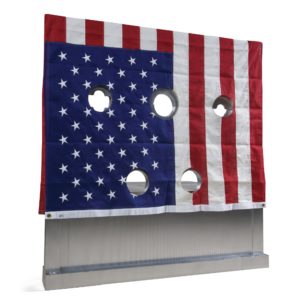
Gibbet, 1993-1994
Aluminum, wood and fabric in two parts
60 1/4 x 56 1/4 x 8 inches and 21 x 21 x 11 1/2 inches
by Cady Noland
When the California Resale Royalties Act — the sole American law that for more than 40 years gave California artists five percent of resale profits — was repealed in 2018 after a seven-year court battle, Joseph del Pesco, International Director of the contemporary arts organization KADIST, started drafting an idea for a reboot. After consulting with historians, artist’s rights lawyers, collectors, patrons and rising art star Amy Sherald, del Pesco now has sketched something he believes addresses the problem of economic disparity in the art world and the one-way tidal wave profit pileup at the top. Inspired by artist Cady Noland, who in 1992 attached a contract to the sale of two silkscreen prints which stated that upon resale 15 percent of the profits would be sent to Partnership for the Homeless, del Pesco has converted royalties into charity. Noland’s terms — now del Pesco’s — create an incentive for the secondary market to honour artists by making the royalty eligible for a tax deduction — harnessing the self-serving lubricant of philanthropy.
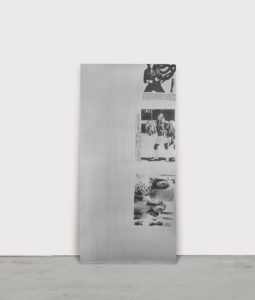
Rubberneck Communion, 1991
Silkscreen on aluminum
75 3/8 by 36 1/4 inches
by Cady Noland
This Statement from the Artist accompanied this work when being sold at auction in 2016:
“In an atmosphere of rapidly trading artwork, it is not possible for Cady Noland to agree or dispute the various claims behind works attributed to her. Her silence about published assertions regarding the provenance of any work or the publication of a photograph of a work does not signify agreement about claims that are being made. Ms. Noland has not been asked for nor has she given the rights to any photographs of her works or verified their accuracy or authenticity.”
Sincerely,
Sara
PS: [Our contract enables the] “wealth created by the resale of an artwork to serve a general good, as a future investment in organizations that exemplify the values of the artist.” (Lauren van Haaften-Schick, art historian and consultant to KADIST for their Agreement of Original Transfer of Work of Art with Resale to Benefit a Charitable Organization.)
Esoterica: KADIST’s new contract is designed for artists to designate a charitable organization to receive a percentage of the resale profit of an artwork — and mentions that the artist herself could, in theory, set up her own charitable organization. In the spirit of the Robert Rauschenberg, Andy Warhol and Joan Mitchell foundations among others, which support artists and arts organizations with grants, KADIST’s intention is to empower artists to start and run their own non-profits and to be able to support them with royalties from the sale of their own artwork. “This contract offers an opportunity to align future profits with your political and social values.” (Joseph del Pesco, KADIST)
Have you considered a Premium Artist Listing? With each letter, an artist is featured at the bottom of this page. The Premium Artist Listings are a means of connecting artist subscribers through their work. Proceeds from each listing contribute to the production of The Painter’s Keys.
“Imagine if just 2 percent of that $29.9 billion [in total U.S. art sales in 2018]did some good. That’s $600 million reaching charitable organizations, about four times the yearly budget of the National Endowment for the Arts. Now imagine if that $600 million was controlled by non-profits run by artists…” (Joseph del Pesco, KADIST)
Featured Workshop
You know your paintings are good but you want them to be great. You want to be able to connect to a deeper source within you and then put that onto your canvas or paper.
To become aware of your depth, calm and genius that lives within your heart.
You will discover ways to go within your heart and soul in order to tap onto that special energy that is yours and yours alone.
This workshop will be a live virtual event. I will be there with you during the entire four days. I can’t wait as I am excited. Please email me if you have any questions….gwen@gwenfox.com
September 14 – 17, 2020, Location…Online
Register here: https://gwenfox.com/retreat/painting-deep-from-the-heart/
Featured Artist
A professional painter in both watercolor and oil for over 35 years, I have been creating plein air workshops in Europe for artists to join me since 1996. Plein air is one of the most exciting methods of painting, and I teach a very easy to learn way of capturing the light quickly, that any artist can apply to their own work during our adventures to Europe. Travel for artists is a great way to immerse yourself in painting and make great advances in your techniques by watching other professionals work, and by sharing your own ideas with other artists we all grow! Authentic locations, such as a 12th Century Castle in Ireland, a French Maison in the countryside of France, or an Italian Villa in an historic hilltop village in Italy are carefully chosen. We want our artists and non-painting guests to feel relaxed and at home, with en-suite bedrooms, excellent chef prepared cuisine, and convenient transfers to painting and exploring locations so you can be where you want to be to create. Join me on our next exciting journey!

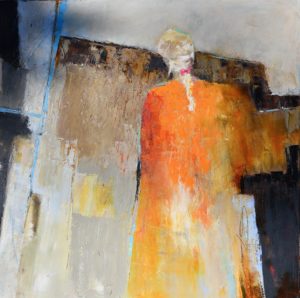
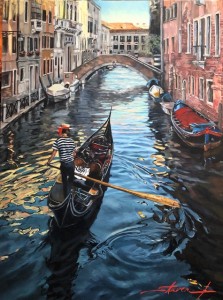



6 Comments
Right on, Robert and Sara!
“Gibbet”….really….this impersonator is either a denizen of the USA or a country that is envious. Blowing up an iconic image to gigantic proportions and defacing it beyond the possibility of plagiarism liability is a pathetic statement about what passes for ART….even though it works. Good deal on the business end….you go girl!
It takes millions of years to make a diamond and a star to make gold, but it only takes a couple of decades, sometimes not even that long, for an artwork to amass incredible monetary value. The rarity thing, beats gold or diamonds hands down, and if you collect at degree shows, spread your bets, you might have several payoffs and even a bumper of investment returns due not necessarily entirely on the quality of your stable, but sheer luck on picking winners selected by circumstances less predictable than would be offered by a roulette table. Investors love art, love the possibility that a super star and a super diamond can be contrived in no time at all. I have people assure me to not worry, my work will be worth a fortune when I die. What an odd thing to say! That artists are excluded from the life success of the work while they ARE still alive, is an absurd notion. That they feel the need to make some affiliation with philanthropy to justify, even to themselves, that they deserve these returns, is equally absurd. Money from art, does not flow to the artists any more than we pay the earth for her diamonds. The sale of one Monet would feed many many artists and keep their studio lights on for a long time. Why should notsome of these super sums benefit artists and facilitate the production of art. I did a little experiment a couple of years ago, where I put a small work into a prominent peer selected show at a price of 4 euros with the caveat, that it could never change hands for more than that sum. The understanding should be, that the new owner was a custodian of the work, a custodian of what could not be had, bought or sold, but belonged to everyone who came in contact with it, its meaning. Of coarse it was snapped up and some time later, the new “custodian” of the piece wrote to me asking what the painting was about. I wrote back and asked her to look at it and tell me what she saw. I also asked her, what did she think she was getting, what did she think she was bringing into her home? If she did not know what the work was about, if it had no meaning for her, why did she feel the need to have it?Why did she take it? Needless to say I never heard from her and needless to say, I regret that this little work is not in good hands! The experiment failed. I wanted to make a point that what was truly valuable was what cannot be bought or sold or possessed in monetary terms. Art is a living thing and life, is not made by money because life is priceless.
fascinating, all you had written, thank you… great concepts , romantic insights, and experiments (why indeed would people purchase items without not necessarily being “moved” by it in some way!? ) I just thought you’d like to know , that the creation of diamonds is alleged to be up to 3.3 billion…! oi! <3 Peace
Paintings by Julie Northey on Facebook
http://www.society6/com/julienorthey
why cant art be dealt with the same as with any blue chip stock?
(says the the guy with no idea how it works?)
then the artist can decide to do what he/she wants with the proceeds
just like Gates and Buffet….
or not?
perhaps its time to create a public offering on Wall St…?
idk….
seems a bit lop-sided to me, for all the wonder and beauty creatives bring to the world.
perhaps the mountains of gems are building up for those in the creative life in the next?
Pingback: 50 Years On: How the ARRTSA Model Continues to Influence Artists' Rights – ART & COUNSEL